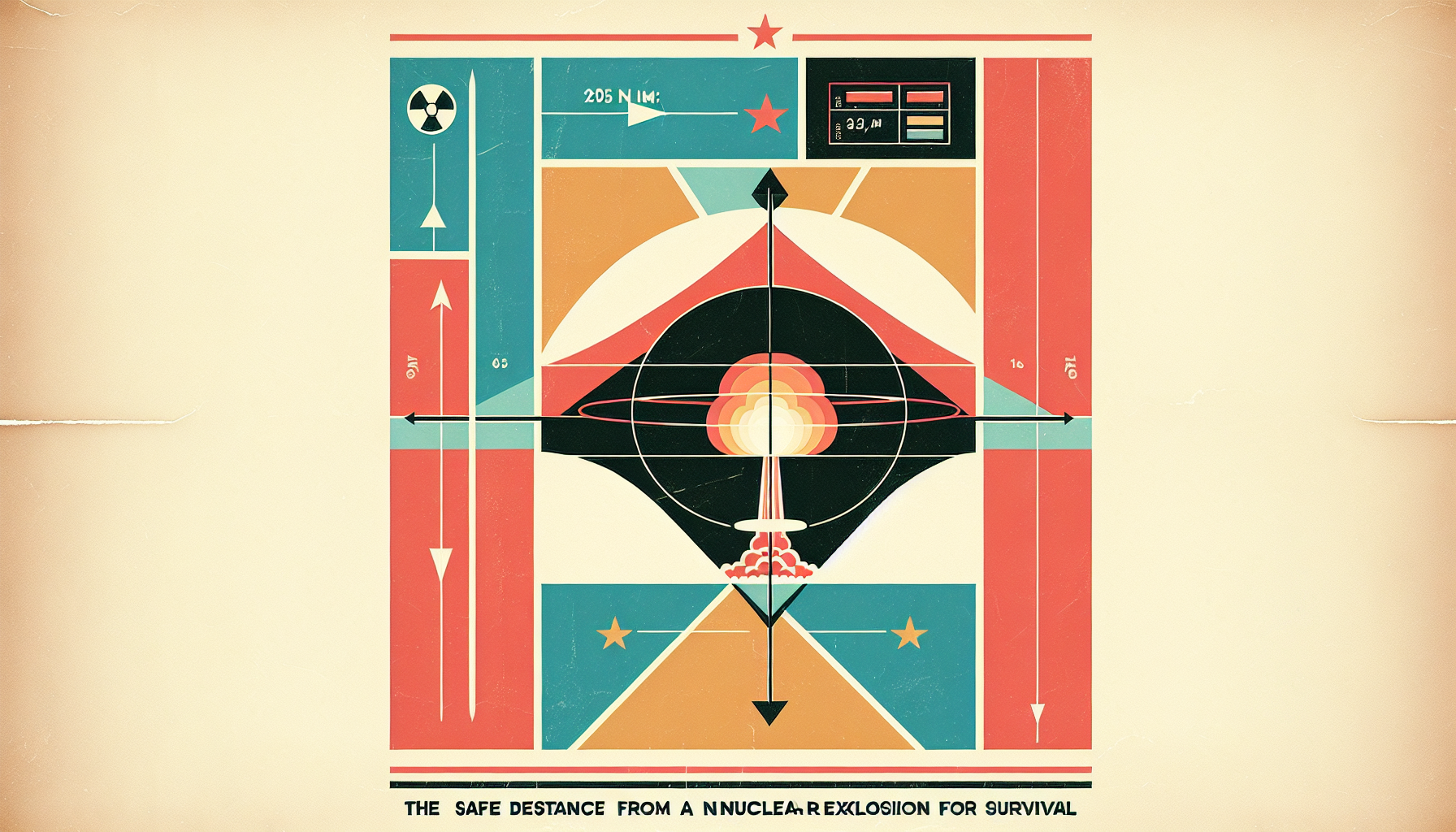How far away do you have to be to survive a nuclear bomb?
FAQs → How far away do you have to be to survive a nuclear bomb?
When it comes to surviving a nuclear bomb, distance is crucial. The effects of a nuclear blast depend on factors such as the size and type of the weapon, the height of the burst, and atmospheric conditions. However, as a general guideline, here are some key points to help you survive:
Immediate Effects (0-1 mile / 0-1.6 km): If you're within 0.5 miles (0.8 km) of the blast center, survival is unlikely. You would likely be vaporized or suffer severe burns and fatal radiation exposure.
Acute Radiation Syndrome (ARS) Threshold (1-2 miles / 1.6-3.2 km): At around 1 mile (1.6 km), you'd still be in the lethal zone for radiation. ARS symptoms could include nausea, vomiting, diarrhea, fatigue, and serious damage to your bone marrow, which could be fatal without treatment.
Survivable Range (2-4 miles / 3.2-6.4 km): Between 1 and 2 miles (1.6-3.2 km) from the blast, radiation exposure is more likely to be survivable. You might experience short-term symptoms like nausea, but with medical attention, recovery is possible.
Minimal Effects (4+ miles / 6.4+ km): At distances of 4 miles (6.4 km) or more from the blast, radiation exposure is minimal, similar to a chest X-ray. While precautions are still necessary, the risk of immediate harm is greatly reduced.
Keep in mind these guidelines are based on a moderate-sized nuclear weapon (around 10-20 kilotons). Larger or smaller weapons may affect individuals at different distances. Local conditions and individual factors also play a significant role in the impact.
Preparation is key for surviving any disaster. Stay informed, stockpile essential supplies, and develop an emergency plan for scenarios like nuclear attacks.




